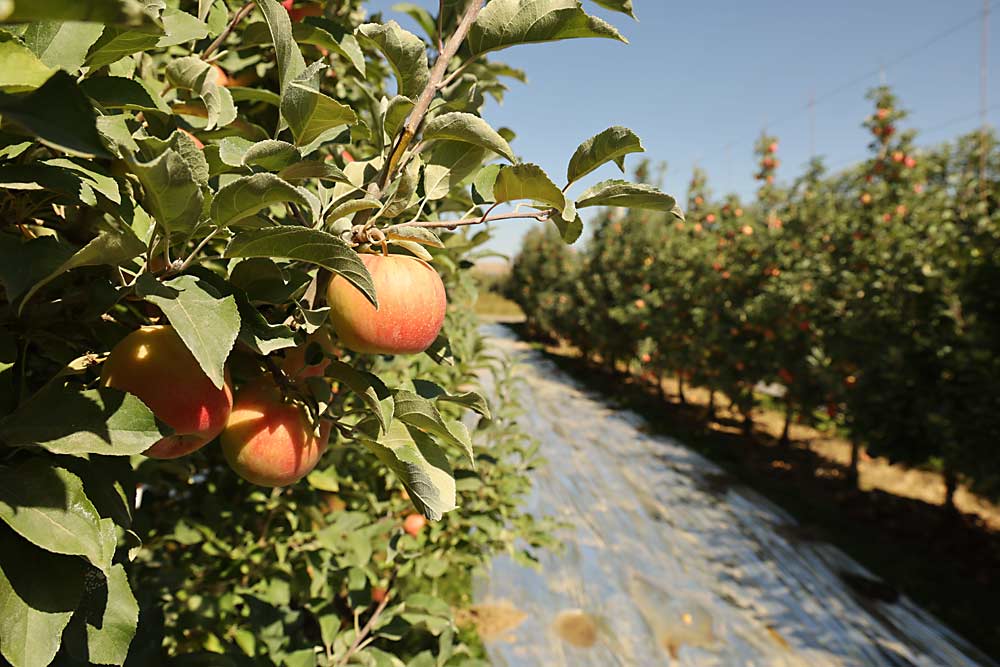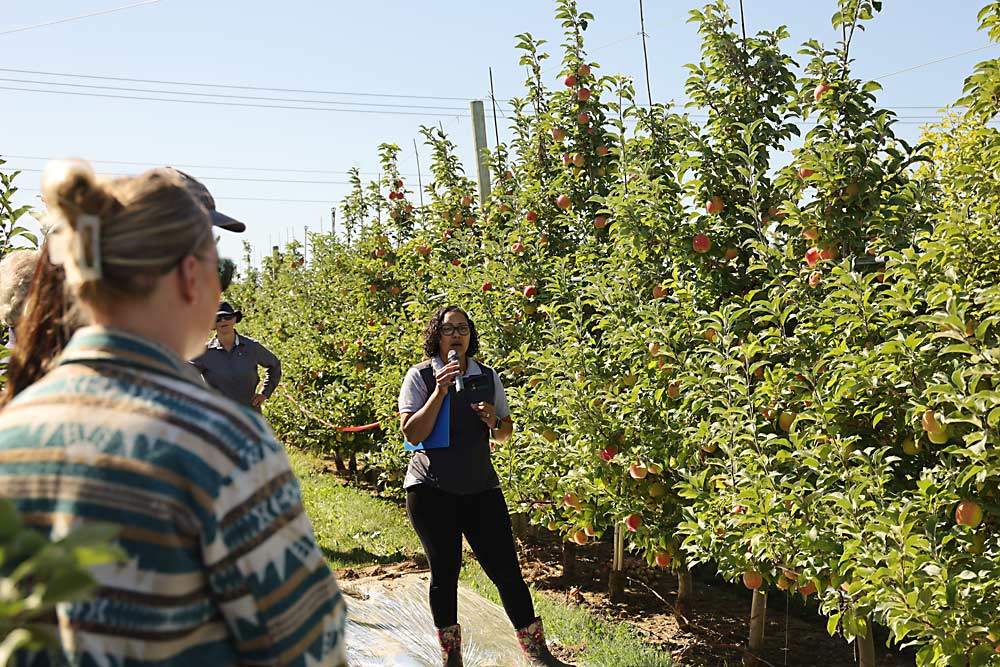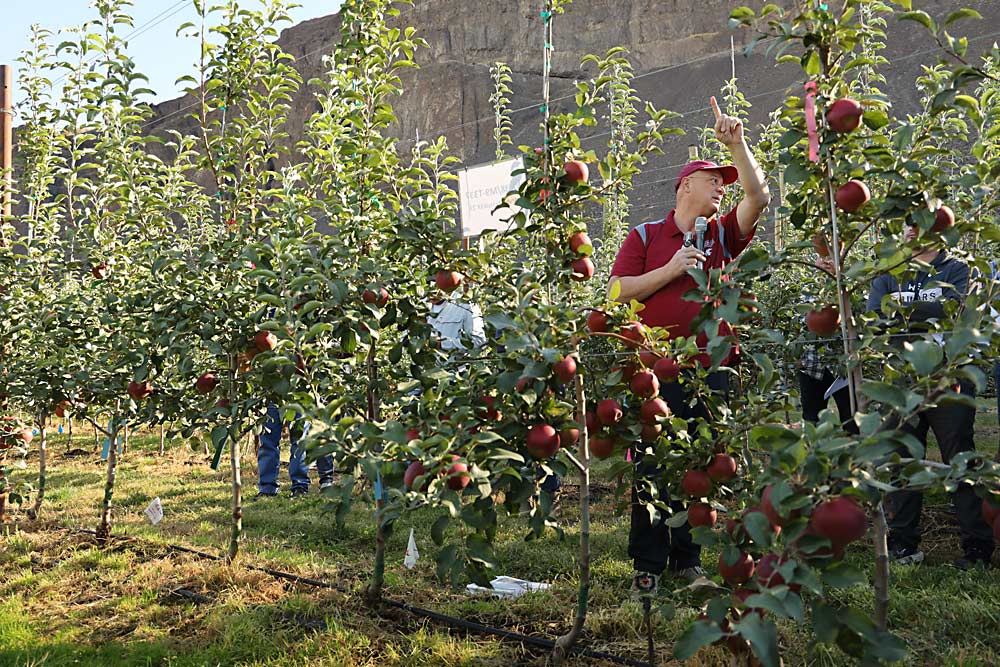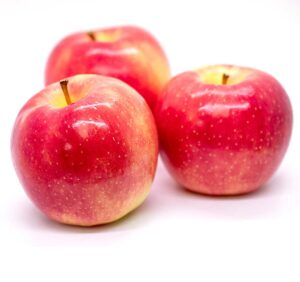
To figure out the optimum harvest timing for WA 64, the new apple release from Washington State University, researchers will be picking at repeated intervals in coming weeks.
During a field day focused on the new cultivar, Manoella Mendoza, research operations manager with the Washington Tree Fruit Research Commission, told attendees she was watching fruit firmness levels to determine the first of several picks.
“I do believe it could be a single-pick variety, but we are still working on that data,” she said.

A Honeycrisp and Cripps Pink cross, the cultivar retains its firmness very well in storage, she said — so well, in fact, that she is careful not to pick it too firm.
In addition to optimizing harvest timing, harvest trials this year will look at the use of reflective mulch to boost color, whether stem clipping is needed, and if bruising develops from picking and transporting in bins. The field day was held at a commercial orchard in Quincy, where the cultivar was planted in 2015 as part of breeding program evaluations.
Interested members of the industry will have another chance to see WA 64 on the trees Tuesday, Sept. 19, when WSU will host another field day in a Prosser-area trial block. For more details, head to: treefruit.wsu.edu/events.
WSU’s Office of Commercialization is in the process of selecting a partner to manage propagation and licensing of the new variety, said breeder Kate Evans. Naming the cultivar and developing the marketing plans will follow.
Meanwhile, WSU researchers have planted rootstock and training system trials to develop more and better horticultural recommendations by the time WA 64 trees are available for commercial planting in 2026. Field day attendees toured this block, which is not yet bearing fruit, at WSU’s Sunrise Orchard.
Similarly, the field day also visited a research block designed to show how rootstock selection and pruning practices influence production in WA 38 (marketed as Cosmic Crisp), WSU’s prior release, which Washington growers began planting at a massive scale in 2018.

The tip-bearing variety is prone to blind wood, so project leader Stefano Musacchi used the field day to show growers how his preferred, short pruning approach pushes the fruit bud development back toward the trunk. In contrast, trees left with longer branches carried more fruit on those branches but showed significant blindness as the branches bent down under the weight of the fruit.
“If you over-crop in the second leaf, we will come back and see blind wood increasing,” he said.
—by Kate Prengaman







Leave A Comment